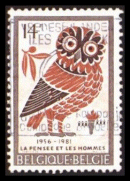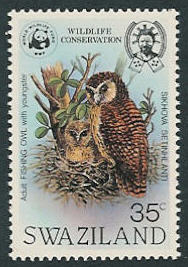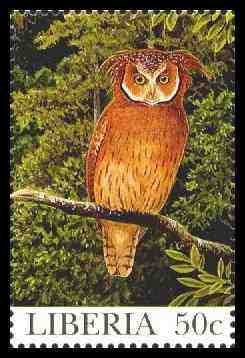 The Owls Plexus
The Owls Plexus 
All original material © Bruce G. Marcot
The Owls Plexus is a segment of The
Plexus web site
updated: 27 July 2025
Contents
Mythology,
Art, Science, and Tributes to Owls
Photos of Owls
Recordings of Owls
Science Reports on Owls by Bruce Marcot
References
Mythology, Art, Science, and Tributes to Owls 1.
Bruce G. Marcot Spotted Owl
Collection, 1951-1997, Oregon State University Library, University Archives,
Corvallis Oregon USA -- "The Bruce G. Marcot Spotted Owl Collection
consists of publications, reports, studies, and correspondence assembled or
generated by wildlife biologist Bruce G. Marcot pertaining to the spotted owl,
the management of its habitat, and its status as an endangered species. The
materials include studies of the spotted owl in California and and the
southwestern United States in addition to the Pacific Northwest." Collection
web site
collection
information![]() (21 KB PDF), collection
contents
(21 KB PDF), collection
contents![]() (8KB
PDF),
(8KB
PDF),
The "Vegetation-Fire-Owl" Project -- Research on potential effects of forest vegetation management, and fire and fuels management, on Northern Spotted Owls in the eastern Cascade Mountains of Washington and Oregon.
Owl mythology:
Marcot, B. G., and D. H. Johnson. 2003. Owls in
mythology and culture. Pp. 88-105 in: J. R. Duncan. Owls of the world:
their lives, behavior and survival. Key Porter Books, Ltd., Toronto, Canada.
319 pp. [5.2MB]
An earlier version of this
chapter posted on-line: Mythology:
Owls in Lore and Culture.
A
recent update, with my interviews on owl myths in Tanzania, east Africa,
with a Chagga tribal member and a Maasai village chief.
Myth of the Tawny Frogmouth 'Owl'
The strange story of the owl who called my name.
The spirit of owls ... and Song of the Spotted Owl. (Poetry.)
A tribute to Dr. Karel H. Voous, the man who loved owls (and who wrote an owl poem).
The year was 1988. Conservation
of old-growth forests and Northern Spotted Owls was a raging social and
political issue in the Pacific Northwest U.S. I was deeply embroiled in
conducting one of the earliest population viability analyses of the owl (or most
any species), while working on a regional environmental impact statement on owl
habitat conservation.
At the time, a fellow owl researcher sent me a Sierra
Club greeting card with a Northern Spotted Owl on the cover. At about the
same time, I had dinner at a Chinese restaurant and cracked open a fortune
cookie. Its message seemed fitting for the issues of the day, so I taped
it onto the front of the
card and have kept it ever since.
Owl Postage Stamps from Zimbabwe -- Stamp out owls!
Photos of Owls by Bruce Marcot
Owls listed here by genus; old genus names in brackets [ ]. Taxonomy here mostly follows König and Weick (2008); taxonomy of Tyto barn owls follows Christidis (2008) [see bottom of page for citations].
Tyto
- Common Barn Owl (Tyto alba) -
- in a baobab tree along the Limpopo River, southwestern Zimbabwe, southern Africa, subspecies affinis
- from Assam, northeast India (captive specimen at Guwahati Zoo), subspecies stertens, photo 1, photo 2- Eastern Barn Owl (Tyto javanica) - [also called Australian Barn Owl, Tyto delicatula by König and Weick (2008)]
- in a rainforest of northern Queensland, Australia, subspecies delicatula, photo 1, photo 2- Lesser Sooty Owl (Tyto multipunctata)
- in rainforest of northern Queensland, Australia - on temporary roost under an open shelter; pair and young in cavity- Masked Owl (Tyto novaehollandiae kimberli)
- (light morph) in rainforest of northern Queensland, Australia - photo 1, photo 2, photo 3Athene
- Spotted Owlet (Athene brama) -
- in Keoladeo National Park (Bharatpur Bird Sanctuary), northern India: on perch 1 ... on perch 2 ... pair in cavity 1 ... owl in cavity 2 ... owl in cavity 3.
- on roost in a tea plantation in Dehra Dun, Uttranchal, northern India, photo 1, photo 2.- Burrowing Owl (Athene cunicularia)
- in a grassy field of the Arcata Bottoms, coastal northwestern California.
- in the Arizona-Sonora Desert Museum, outside Tucson, Arizona: photo 1, photo 2, photo 3.- Little Owl (Athene noctua)
- in South Island, New Zealand (the species has been introduced there).Bubo
- Snowy Owl (Bubo [Nyctea] scandiaca)
- rare sighting on the north coast of Oregon, on back dunes, 5 February 2006, female -- photo 1 (perch), photo 2 (perch), photo 3 (perch), photo 4 (flying), photo 5 (in back dune habitat).
- along the Dalton Highway south of Prudhoe Bay (Deadhorse), Alaska, by the Arctic Ocean, May 2009:
photo 6, photo 7, photo 8, photo 9, photo 10- Giant Eagle-owl (Verraux's Eagle-owl, Milky Eagle-owl) (Bubo lacteus)
- on roost along a dry sand wash in Kruger National Park, South Africa; photo 1, photo 2
- juvenile & adult, on day roosts at Lake Baringo, Rift Valley, Kenya; photo 3, photo 4, photo 5,
photo 6, photo 7, photo 8, photo 9, photo 10, photo 11, photo 12
- adult on day roost, taken in Tarangire National Park, Tanzania
- individual in tree, molting stage; near Lake Baringo, Rift Valley, southwest Kenya (note: eyes were actually brown, not gray as appears in this photo in which I used red-eye reduction) [corrected from previous identification as Grayish Eagle-Owl; correction thanks to Claus Koenig, noting its light-colored bill]- Great Horned Owl (Bubo virginianus)
- captive specimen in the Arizona Sonora Desert Museum, Tucson, Arizona.
- on daytime roost in deep shade, northwestern Oregon; photo 1, photo 2; photo 3, photo 4- Eurasian Eagle-Owl (Bubo bubo)
- museum mount specimen, taken in Russian Far East.
- captive bird, Gorkhi-Terelj National Park, Mongolia; photo 1, photo 2 (head with eyes fully open), photo 3 (head with eyes half showing nictating membrane)- Spotted Eagle-Owl (Bubo africanus)
- taken in Viphya Plateau, northern Malawi, Africa.
- taken at Kambi Ya Tembo Sinya Camp, northern Tanzania along the border with Kenya,
photo 1, photo 2- Grayish (or Vermiculated) Eagle-Owl (Bubo cinerascens or B. africanus cinerascens) ... possibly split as a separate species from Spotted Eagle-Owl (has brown eyes, compared with the yellow eyes of Spotted Eagle-Owl); note: these photos, taken near Lake Baringo, Rift Valley, southwest Kenya, extend the distribution of this species as previously denoted in the range map in König et al. (1999).
- pair, at rock outcrop: photo 1, photo 2- Brown Fish Owl (Bubo [Ketupa] zeylonensis) -
- captive specimen I photographed in the city of Shillong, in the state of Meghalaya, in remote northeast India.
- on perch in Corbett National Park, northern India (strongly backlit).
- on perch in a tea plantation, Assam, northeast India (hidden in foliage).
- captive specimen in Guwhati Zoo, Assam, India: photo 1, photo 2, with redeye from flash, head closeup, head with redeye, head showing nictating membrane over eye.Ninox
- Rufous Owl (Ninox rufa)
- in rainforest along stream, northern Queensland, Australia- Barking Owl (Ninox connivens)
- along a reservoir, Northern Territory, Australia- Morepork (Ninox novaeseelandiae)
- in a raptor rehabilitation center, Rotorua, New ZealandSurnia
- Northern Hawk Owl (Surnia ulula)
- on perch in black spruce forest, central Alaska (photos strongly back-lit): photo 1 searching for prey, photo 2 searching for prey, photo 3 gular fluttering in heat of the dayOtus
- African Scops Owl (Otus senegalensis)
- on day roost in Kruger National Park, South Africa.- Indian Scops Owl (Otus bakkamoena)
- on day roost in a Phoenix palm, Keoladeo National Park (Bharatpur Bird Sanctuary), northern India, closeup 1, closeup 2.Megascops
- Western Screech-owl (Megascops [Otus] kennicottii)
- injured specimen in northwestern California that I rehabilitated and that was released back into its forest habitat: Photo 1, Photo 2.
- young in nest box, northwestern Oregon (with thanks to Claire Puchy): photo 1, photo 2, photo 3, photo 4
- gray phase photographed at the Arizona-Sonora Desert Museum, outside Tucson, Arizona.
- "Western Screech Owl In A Box": video 1, video 2- Rufescent Screech-Owl (Megascops [Otus] ingens)
- subtropical forest, Septimo Paraiso Lodge, Mindo, Ecuador: photo 1, photo 2, photo 3Ptilopsis
- Northern White-faced Scops Owl (Ptilopsis [Otus] leucotis)
- on day roost, Lake Baringo, Rift Valley, Kenya, subspecies leucotis; showing "alert posture:" photo 1, photo 2Glaucidium
- Pearl-spotted Owlet (Glaucidium perlatum)
- rear view of a Pearl-spotted Owlet taken in Zimbabwe. Note the markings on the back of the head that resemble eyes. This is to deter predators. But not photographers!
- on day roosts, and called in at night, Lake Baringo, Rift Valley, Kenya; subspecies licua: photo 1, photo 2 (rear view showing eye spots), photo 3- African Barred Owlet (Glaucidium capense)
- rear view, taken in western Zimbabwe
- on daytime perch in Liwonde National Park, southern Malawi
- on nighttime perch in South Luangwa National Park, eastern Zambia.- Asian Barred Owlet (Cuckoo Owlet) (Glaucidium cuculoides)
- on perch at Dhikala Camp in the heart of Corbett National Park, northern India. Closeup.- Barred Jungle Owlet (Glaucidium radiatum)
- on perch, banks of Kosi River adjacent to Corbett National Park, northern India -- Photo 1, Photo 2.- Ridgway's Pygmy Owl (Glaucidium ridgwayi)
- on perch in the Arizona-Sonora Desert Museum, outside Tucson, Arizona -- front view; and back view showing eye spots on back of head- Austral Pygmy Owl (Glaucidium nanum)
- on day perch in Torres del Paine National Park, Chile -- Photo 1Micrathene
- Elf Owl (Micrathene whitneyi)
- on perch in the Arizona-Sonora Desert Museum, outside Tucson, Arizona -- Photo 1, Photo 2, Photo 3.Strix
- Northern Spotted Owl (Strix occidentalis caurina)
- juveniles in mesoptile plumage (body is still in downy feathers but wing and tail flight feathers have grown in), in Klamath Mountains of northwestern California.- Barred Owl (Strix varia)
- captive specimen at the Arizona Sonora Desert Museum outside Tucson, Arizona (from ca. 1980, when it was incorrectly displayed as a Mottled Owl)- Brown Wood Owl (Strix leptogrammica)
- captive specimens in the city of Shillong, in the state of Meghalaya, in remote northeast India -- Photo 1, Photo 2, Photo 3- African Wood Owl (Strix woodfordii)
- on night perch in South Luangwa National Park, eastern Zambia, Africa.- Mottled Owl (Strix [Ciccaba] virgata)
- on day roost in the high subcanopy of Monteverde Cloud Forest of central Costa Rica.Scotopelia
- Pel's Fishing Owl (Scotopelia peli)
- captive specimen taken in Senga Bay, Malawi, Africa.Asio
Owl Eye Spots ![]() -- Examples of species of small owls with eye spots on the back
of their heads.
-- Examples of species of small owls with eye spots on the back
of their heads.
Recordings of Owls by Bruce Marcot 1
Athene
Bubo
- Great Horned Owl (Bubo virginianus)
- adult song:
o given at dawn in August, northern Oregon: example 1 (noise reduced);
example 2 with last note higher in pitch (noise reduced)
o given after dusk in July, southern California (Breezy Point, a cape in Cedarpines Park, CA,
in the San Bernadino Mountains at about 4500' elevation), male giving lazy song
- adult local contact calls:
o late November, Bandon, south coast Oregon, 4 hrs after dusk, example 1, example 2
- juvenile squawk calls:
o winter, northwestern Oregon
o autumn, Upper Klamath Lake, southern Oregon (during nighttime snowstorm, with some
background noise)- Giant Eagle Owl (Bubo lacteus)
I made the following recordings of juvenile squawk calls at Lake Baringo, Rift Valley, Kenya:
o on daytime roost, probably food-begging call, 3 calls (originally given about 40 sec. apart, intervening time edited down in this sound clip) - call 1; single call noise-reduced, call 2
o on daytime roost, probably heat-distress or contact call, 4 calls (originally given about 20-30 sec. apart, time-edited here) - call 3; two calls noise-reduced, call 4
o on nighttime perch, possibly contact call (no time-editing here), call 5, call 6Megascops
- Western Screech-owl (Megascops kennicottii)
- song: recorded in mixed hardwood-conifer forests of the Klamath Mountains in northwestern California: song 1; song 2
- juvenile begging calls, summer, Crestline, California (San Bernadino Mountains, 4400' elevation)
type 1 chitter call, type 2 chitter call- Rufescent Screech-owl (Megascops ingens)
- subtropical forest, Septimo Paraiso Lodge, Mindo, Ecuador - example 1, example 2 (longer with rain and insect sounds)Otus
- Flammulated Owl (Otus flammeolus)
- song recorded in Douglas-fir/oak forests of the Klamath Mountains in northwestern California- Collared Scops Owl (Otus lettia)
- song recorded in northeastern India.
- from Kaziranga National Park, Assam, Northeast India - example 1, example 2, example 3, example 4 with unknown call- Oriental Scops Owl (Otus sunia)
- Periyar Tiger Reserve, Kerala, south India - example 1, example 2- African Scops Owl (Otus senegalensis)
- Serengeti National Park, Tanzania - example 1(faint)Ptilopsis
- Northern White-faced Scops Owl (Ptilopsis [Otus] leucotis)
- Kenya, Africa - example 1: faint, with much background noise, but notable for the double-hoot call heard here, which seems much quicker than as heard on commercially-available recordingsGlaucidium
- Northern Pygmy Owl (Glaucidium californicum, formerly G. gnoma)
- song recorded in Douglas-fir forests of northwestern California- Jungle Owlet (Glaucidium radiatum)
- song recorded in northeastern India
- short call (repeated), Thekkady, Kerala, south India- Asian Barred Owlet (Glaucidium cuculoides)
- from Kaziranga National Park, Assam, Northeast India - example 1, example 2, example 3, example 4- Pearl-spotted Owlet (Glaucidium peralatum)
- Lake Baringo, Rift Valley, Kenya; nighttime, repeated-toot call; same call noise-reducedAegolius
- Northern Saw-whet Owl (Aegolius acadicus)
- song recorded in northwestern CaliforniaStrix
- Mottled Wood Owl (Strix oscellata)
- song recorded in the Shivalik Hills, foothills of the Himalayas, in Dehra Dun, northern India. A weird story about this call.
- additional songs from same location, recorded several years later -- example 1, example 2
- important caveat about the above recordings of Strix oscellata: I am not 100% certain of identification. I have tried to track down others' recordings of this species for comparison with no luck.- African Wood Owl (Strix woodfordii)
- songs recorded in Victoria Falls National Park, northwestern Zimbabwe; male (lower voice), female (higher voice)
- Also see below for science report on vocalizations of this species.- Tawny Owl (Strix aluco)
- recorded in Forêt de l'Isle-Adam, France, north of Paris -- typical songs: male (presumably; lower pitch), female (higher pitch); cree-ick call presumably by female.- Brown Wood Owl (Strix leptogrammica)
- northern India, song 1; song 2Ninox
- Brown Hawk Owl (Ninox scutulata) -
- typical song, recorded in Russian Far East, southern Primorski Krai in the remote stretches of the upper Bikin River watershed in hardwood-Korean pine forest
- from Thekkady, Kerela, south India, near Periyar Tiger Reserve: example 1, example 2- Barking Owl (Ninox connivens)
- single male, calling along a reservoir, Northern Territory, Australia- Morepork (Ninox novaeseelandiae)
- single male, calling at night across a windy field, North Island, New Zealand
- single males, calling at night: normal song; less energetic song; North Island, New Zealand
- four Moreporks calling at once, with occasional squeal of North Island Brown Kiwi (Apteryx mantelli)- Southern Boobook (Ninox boobook)
- single male, calling at night along the Wye River coast, southern Victoria, Australia
(Note the similarity to the Morepork, above! Also, the rushing sound in the background
of this Boobook file is ocean surf noise.)Scotopelia
- Pel's Fishing Owl (Scotopelia peli)
- wail call - filtered, unfiltered, recorded along the Luilaka River along Salonga National Park, central Democratic Republic of the Congo, in tropical rainforest.
Science Reports on Owls by Bruce Marcot
(listed by year, most
recent first)
Marcot, B. G. 2025. Eulen in Mythen Indonesiens: Eine kleine Sammlung persönlicher Einstellungen gegenüber Eulen [Owls in myths of Indonesia: A small collection of personal attitudes towards owls. In German]. Kauzbrief 37:45-47. https://www.ag-eulenschutz.de/kauzbrief-archiv/ [English version available here
]
Marcot, B. G. 2024. Owls of happiness. Ecology Picture of the Week, 20-26 May 2024.
Marcot, B. G., D. B. Lesmeister, T. Wilson, E. Volkman, and P. Anderson. 2020. Applying principles and methods of risk analysis: a case example of Northern Spotted Owl research in a dynamic pandemic landscape. Research Paper PNW-RP-617. USDA Forest Service, Pacific Northwest Research Station. Portland OR. 30 pp. [Available here
]
Marcot, B. G. 2019. Foreword. P. vi in: P. Mehta, S. Talmale, and J. Kulkarni. All about owl diet. A manual on prey identification from owl pellets. Raptor Research and Conservation Foundation (RRCF), Mumbai, India. [PDF
]
Dunk, J. R., B. Woodbridge, N. Schumaker, E. M. Glenn, B. White, D. W. LaPlante, R. G. Anthony, R. J. Davis, K. M. Dugger, K. Halupka, P. Henson, B. G. Marcot, M. Merola-Zwartjes, B. R. Noon, M. G. Raphael, J. Caicco, D. L. Hansen, M. J. Mazurek, and J. Thrailkill. 2019. Conservation planning for species recovery under the Endangered Species Act: a case study with the Northern Spotted Owl. PLoS ONE 14(1):e0210643. [PDF
] Also available here.
Marcot, B. G. 2016. Noctural icons of a natural history observer [book review: The House of Owls by Tony Angell]. Northwest Science 90(2):245-246. [PDF
]
Dunk, J. R., B. Woodbridge, E. M. Glenn, R. J. Davis, K. Fitzgerald, P. Henson, D. W. LaPlante, B. G. Marcot, B. R. Noon, M. G. Raphael, N. Schumaker, and B. White. 2015. The scientific basis for northern spotted owl conservation: a response to Loehle, Irwin, Manly, and Merrill. Forest Ecology and Management 358:355-360. [PDF
]
Marcot, B. G., P. H. Singleton, and N. H. Schumaker. 2015. Analysis of sensitivity and uncertainty in an individual-based model of a threatened wildlife species. Natural Resource Modeling 28(1):37-58. [PDF
]
Raphael, M. G., P. Hessburg, R. Kennedy, J. Lehmkuhl, B. Marcot, R. Scheller, P. Singleton, and T. Spies. 2014. Assessing the compatibility of fuel treatments, wildfire risk, and conservation of northern spotted owl habitats and populations in the eastern cascades: a multi-scale analysis. Final Report JFSP Project 09-1-08-31. Joint Fire Science Program (http://www.firescience.gov/). 25 pp. [PDF
].
Also see: Vegetation-Fire-Owl ProjectLewis, D., and B. Marcot. 2013. Myth of the tawny frogmouth 'owl'. The Owl Pages https://www.owlpages.com/owls/articles.php?a=95.
Marcot, B. G., M. G. Raphael, N. H. Schumaker, and B. Galleher. 2013. How big and how close? Habitat patch size and spacing to conserve a threatened species. Natural Resource Modeling. 26(2):194-214. [PDF
]
Appendix on Methods: [PDF]
Marcot, B. G. 2007. Unique songs of African Wood-Owls (Strix woodfordii) in Democratic Republic of Congo. Gabar 18(1):16-24. [PDF
]
Marcot, B. G. 2007. Magellanic Horned Owl's retreat: nest and prey remains. Web report.
This also links to:
Marcot, B. G. 2006. Prey remains of Magellanic Horned Owl (Bubo magellanicus) at Perito Moreno, southern Argentina. Found here.Marcot, B. G. 2007. Owls in native cultures of central Africa and North America. Tyto Newsbrief 11(March):5-9. [PDF
]
Marcot, B. G., and R. Molina. 2006. Conservation of other species associated with older forest conditions. Pp. 145-179 in: R. Haynes, B. T. Bormann, D. C. Lee, and J. R. Martin, eds. Northwest Forest Plan--the first 10 years (1994-2003): synthesis of monitoring and research results. General Technical Report PNW-GTR-651. USDA Forest Service, Pacific Northwest Research Station, Portland OR. 292 pp. [PDF
]
Marcot, B. G., S. Morey, and P. R. Phifer. 2006. Summary of results: Threats Workshop, June 1-2, 2006. Internal report to USDI Fish and Wildlife Service, Northern Spotted Owl Recovery Team, Interagency Staff Team, Portland, Oregon. 18 pp.
Marcot, B. G. 2005. Observations of owls in western Democratic Republic of the Congo, with a note on African Wood Owl vocalizations. Tyto 9(4):9-15. (Tyto-Newsbrief, International Owl Society) [PDF
] Also available at:
http://www.owlpages.com/articles.php?section=Studies+and+Papers&title=Congo+OwlsMarcot, B. G., and D. H. Johnson. 2003. Owls in mythology and culture. Pp. 88-105 in: J. R. Duncan. Owls of the world: their lives, behavior and survival. Key Porter Books, Ltd., Toronto, Canada. 319 pp. [PDF
] Also, the entire book is available at Amazon.com
Marcot, Bruce G. 2002. Owls in Malawi and eastern Zambia. Tyto 9(2):11-13. (Tyto-Newsbrief, International Owl Society, September 2004.) [PDF
] Also available at:
http://www.owlpages.com/articles.php?section=Studies+and+Papers&title=Malawi+ZambiaOlsen, J., B. G. Marcot, and S. Trost. 2002. Do southern boobooks Ninox novaeseelandiae duet? Pp. 320-328 in: I. Newton, R. Kavanagh, J. Olsen, and I. Taylor, eds. Ecology and conservation of owls. CSIRO Publishing, Collingwood, Victoria, Australia. [PDF
]
Marcot, B. G., and J. W. Thomas. 1997. Of spotted owls, old growth, and new policies: a history since the Interagency Scientific Committee report. Gen. Tech. Rep. PNW-GTR-408. USDA Forest Service, Portland OR. 34 pp. [PDF
]
Marcot, B. G. 1995. Owls of old forests of the world. USDA Forest Service Gen. Tech. Rpt. PNW-GTR-343. Portland OR. 64 pp. Part 1 [PDF
], Part 2 [PDF
], Part 3 [PDF
]
Thomas, J. W., M. G. Raphael, R. G. Anthony, E. D. Forsman, A. G. Gunderson, R. S. Holthausen, B. G. Marcot, G. H. Reeves, J. R. Sedell, and D. M. Solis. 1993. Viability assessments and management considerations for species associated with late-successional and old-growth forests of the Pacific Northwest. USDA Forest Service, U.S. Govt. Print. Office, Washington, D.C. 530 pp.
Marcot, B. G. 1991. Use of models of spotted owl populations for building a conservation strategy. Bulletin of the Ecological Society of America 72(2(Supplement)):181-182. [PDF
]
Marcot, B. G. 1991. Viability considerations for managing spotted owls in southern California mountains. Presented February 1990 at USDA Forest Service Workshop on Managing Spotted Owls in Southern California, held at California State Polytechnic University, Pomoa, California. 51 pp. [PDF
]
Marcot, B. G., and M. G. Raphael. 1991. Modeling habitat capability for northern spotted owls. Process documentation for USDA Forest Service Final Spotted Owl EIS. USDA Forest Service, Portland OR. 40 pp. [PDF
]
Marcot, B. G., and R. Holthausen. 1987. Analyzing population viability of the spotted owl in the Pacific Northwest. North American Wildlife and Natural Resources Conference 52:333-347. [PDF
]
Marcot, B. G., D. Carrier, and R. Holthausen. 1986. The northern spotted owl (Strix occidentalis caurina). in: B. A. Wilcox, P. F. Brussard, and B. G. Marcot, eds. The management of viable populations: theory, applications, and case studies. Center for Conservation Biology, Stanford, CA.
Marcot, B. G., R. S. Holthausen, F. B. Samson, and A. B. Carey. 1985. Management and assessment of northern spotted owl populations on National Forests in Washington and Oregon. In: Raptor Research Foundation Symposium on the Management of Birds of Prey. International Meeting, Session 11:10.
Marcot, B. G., and J. Gardetto. 1980. Status of the spotted owl in Six Rivers National Forest, California. Western Birds 11:79-87. [PDF
]
Marcot, B. G., and R. Hill. 1980. Flammulated owls in northwestern California. Western Birds 11:141-149. [PDF
]
Marcot, B. G. 1979. A simple model for predicting no. of spotted owl territories. U.S. Forest Service, Six Rivers National Forest, Fisheries and Wildlife. Eureka, California. 8 pp. [PDF
]
Marcot, B. G. 1978. Prolegomena of the spotted owl (Strix occidentalis) in Six Rivers National Forest. USDA Forest Service, Six Rivers National Forest, Eureka CA. 47 pp. [PDF
]
References
Christidis, L., and W. E. Boles. 2008. Systematics and taxonomy of Australian birds. CSIRO Publishing, Melbourne, Australia.
König, C., and F. Weick. 2008. Owls of the world. Second edition. Yale University Press, New Haven and London. 528 pp.
1 Some sounds and reports posted on Deane Lewis' OwlPages.
Photos on the top of this page are Ridgeway's Pygmy-owl (left) and Burrowing Owl
(right),
both © Bruce G. Marcot.
Bruce G. Marcot may be contacted here.



